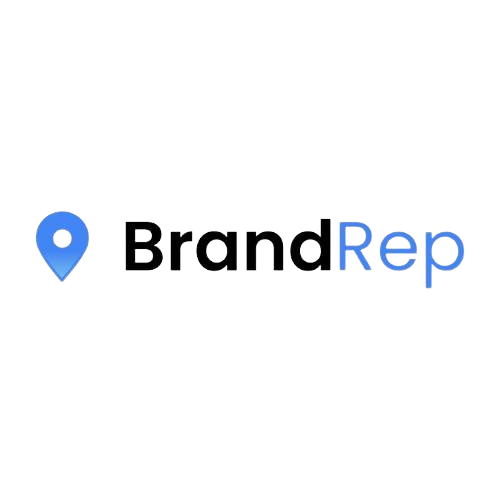Understanding how to measure the success of your paid advertising campaigns is crucial in digital marketing. With numerous platforms and metrics available, knowing which indicators reflect your campaign’s effectiveness and how to interpret them is essential. This comprehensive guide will walk you through the critical steps and metrics for evaluating your paid advertising efforts, ensuring you get the most out of your marketing budget.
Introduction to Paid Advertising Campaigns
Paid advertising campaigns are an integral part of any robust marketing strategy. These campaigns include online advertisements, such as search engine ads, social media ads, display ads, and video ads. They offer a way to reach a targeted audience quickly and effectively. However, the success of these campaigns hinges on accurate measurement and analysis.
Setting Clear Objectives in Paid Advertising
Before diving into metrics and tools, it’s vital to establish clear objectives for your advertising campaign. These goals will guide your strategy and help you determine the most relevant metrics. Common objectives include:
Brand Awareness
Increasing your brand’s visibility is a fundamental objective in any advertising campaign. Brand awareness ensures your target audience becomes familiar with your brand name, logo, and messaging. This familiarity fosters trust and recognition, which can influence future purchasing decisions. Effective strategies for boosting brand awareness include leveraging social media platforms, utilizing display ads, and investing in influencer partnerships. By consistently presenting your brand across various channels, you create a lasting impression that can lead to increased market share and customer loyalty.
Lead Generation
Capturing potential customer information for future engagement is critical for building a robust sales pipeline. Lead generation involves attracting prospects and encouraging them to share their contact information, typically through forms on landing pages, sign-up incentives, or gated content. By collecting leads, you can nurture these prospects through targeted email campaigns, personalized content, and follow-up communications, ultimately guiding them down the sales funnel. Effective lead generation increases the number of potential customers and enhances the quality of interactions, paving the way for higher conversion rates.
Sales and Conversions
Driving purchases or other desired actions on your website is the ultimate goal of many advertising campaigns. Whether it’s making a purchase, subscribing to a service, or downloading an app, conversions signify the success of your marketing efforts. Creating compelling calls-to-action (CTAs), optimizing landing pages for user experience, and offering value propositions that resonate with your audience is essential to boosting sales and conversions. Analyzing conversion metrics helps you identify areas for improvement and refine your strategies to ensure that your ads attract clicks and convert visitors into loyal customers.
Website Traffic
Increasing the number of visitors to your site is crucial for expanding your online presence and driving potential business opportunities. More traffic translates to more potential leads and customers. Various tactics can boost website traffic, including search engine optimization (SEO), content marketing, social media promotion, and paid advertising. Monitoring traffic sources and user behavior helps you understand what drives visitors to your site. It allows you to tailor your marketing strategies to attract a broader and more engaged audience. A steady increase in website traffic is a strong indicator of growing interest and engagement with your brand.
Customer Engagement
Encouraging interactions with your brand through likes, shares, comments, and other forms of engagement is vital for building a loyal customer base and fostering community. Customer engagement measures how actively your audience interacts with your content, provides valuable feedback, and shares their experiences with others.. High engagement levels often correlate with increased brand loyalty and advocacy. Strategies to boost engagement include creating interactive content, running contests, responding to comments, and fostering conversations on social media. By prioritizing customer engagement, enhance brand perception and create a vibrant community of supporters who can help amplify your brand message.
Key Metrics to Measure Success
Click-Through Rate (CTR)
Click-through rate (CTR) is a fundamental metric that measures the ratio of users who click on your ad to the total number of users who view the ad. This metric is essential for understanding how effectively your ad captures the attention of your audience. A high CTR indicates that your ad is relevant and appealing, resonating well with viewers and encouraging them to engage. The formula for calculating CTR is (Number of Clicks / Number of Impressions) x 100, providing a clear percentage that reflects the success of your ad in prompting user interaction.

Conversion Rate
Conversion rate measures the percentage of users who complete a desired action after clicking on your ad. This action could range from purchasing to filling out a form or subscribing to a newsletter. By tracking conversion rates, you can gauge how effectively your ad drives meaningful engagement and actions from your audience. A high conversion rate typically signifies that your ad and landing page are compelling and relevant to users. The formula to calculate conversion rate is (Number of Conversions / Number of Clicks) x 100, giving you a clear percentage that reflects your campaign’s success in converting clicks into desired outcomes.
Cost Per Click (CPC)
Cost Per Click (CPC) is the amount you pay each time a user clicks on your ad. This metric is essential for managing your advertising budget and understanding the efficiency of your ad spend. By monitoring CPC, you can ensure that your advertising costs align with your budget while still achieving significant reach and engagement. Keeping your CPC low while maintaining high-quality traffic is key to maximizing your return on investment. The formula to calculate CPC is Total Cost of Campaign / Number of Clicks, helping you understand how much each click costs and guiding your budgeting decisions.
Cost Per Acquisition (CPA)
Cost Per Acquisition (CPA) measures the cost of acquiring a customer through your paid advertising efforts. This metric is crucial for evaluating your campaigns’ return on investment (ROI), as it directly relates to how much you’re spending to gain each customer. A lower CPA indicates a more efficient campaign, where you spend less to convert potential customers into actual customers. The formula to calculate CPA is the Total Cost of Campaign / Number of Conversions, providing insight into the financial efficiency of your advertising strategies.
Return on Ad Spend (ROAS)
Return on Ad Spend (ROAS) is a critical metric that calculates the revenue generated for every dollar spent on advertising. This metric helps you assess the overall effectiveness and profitability of your campaigns. A higher ROAS means that your ads generate substantial revenue relative to their cost, indicating a successful campaign. Monitoring ROAS allows you to adjust your strategies to improve profitability continually. The formula to calculate ROAS is Revenue from Campaign / Cost of Campaign, offering a clear view of the financial returns from your advertising investments.
Impressions
Impressions refer to the number of times your ad is displayed to users. While a high number of impressions can indicate broad visibility, it’s essential to balance this metric with engagement metrics like CTR and conversions to ensure your ads are seen and acted upon. Impressions alone do not guarantee success; they must translate into meaningful interactions. High impressions, engagement, and conversion rates indicate an effective ad campaign that captures user interest and drives actions.interest and drives actions.
Engagement Rate
Engagement rate measures users’ interactions with your ad, such as likes, shares, comments, and clicks. This metric is particularly relevant for social media campaigns where user interaction is a key indicator of success. A high engagement rate signifies that your ad content resonates with your audience and encourages them to interact with it. By tracking engagement rates, you can refine your content to boost further engagement and enhance overall campaign performance. The formula to calculate engagement rate is (Total Engagements / Total Impressions) x 100, providing a percentage that reflects the level of user interaction with your ad.
Tools for Measuring Paid Advertising Campaign Success
You can accurately monitor your campaigns by using these helpful tools:
- Google Analytics: Google Analytics is a powerful tool for tracking website traffic and user behavior. It provides insights into how users interact with your site after clicking on your ads, helping you measure conversions and ROI.
- Facebook Ads Manager: Facebook Ads Manager offers comprehensive metrics for your social media campaigns. It tracks impressions, clicks, conversions, and engagement, allowing you to optimize your ads for better performance.
- Google Ads: Google Ads provides detailed reports on your search and display campaigns. It tracks metrics CTR, CPC, CPA, and ROAS metrics, helping you fine-tune your ad strategy.
- HubSpot: HubSpot’s marketing software integrates with your advertising platforms to provide a unified view of your campaign performance. It offers insights into lead generation, conversion rates, and ROI.
- SEMrush: SEMrush is an all-in-one marketing toolkit offering competitive analysis, keyword research, and performance tracking for paid campaigns. It helps you identify opportunities and optimize your ad spend.

Analyzing and Interpreting Data
Collecting data is just the first step. The true value lies in analyzing and interpreting this data to make informed decisions. Here are some tips for effective data analysis:
Compare Against Benchmarks
Benchmarking your metrics against industry standards or previous campaigns helps you understand how well your ads perform. It provides context and highlights areas for improvement.
Segment Your Data
Segmenting your data by audience, location, device, and other factors allows you to identify patterns and trends, helping you tailor your campaigns to specific segments for better results.
A/B Testing
A/B testing involves creating multiple versions of an ad and comparing their performance. This method helps you identify which elements (e.g., headlines, images, CTAs) resonate best with your audience.
Attribution Modeling
Attribution modeling helps you understand the customer journey and each touchpoint’s role in driving conversions. It provides insights into which channels and ads contribute most to your goals.
Optimizing Your Paid Advertising Campaigns
Once you have analyzed your data, the next step is to optimize your campaigns. Here are some strategies for improving performance:
Refine Targeting
Use the insights from your data analysis to refine your targeting parameters. Focus on the demographics, interests, and behaviors most likely to convert.
Improve Ad Creatives
Based on your A/B testing results, optimize your ad creatives, which may involve tweaking headlines, updating images, or revising your call-to-action (CTA) to make your ads more compelling.
Adjust Bidding Strategies
Review your CPC and CPA metrics to adjust your bidding strategies. To maximize ROI, consider increasing bids for high-performing keywords or lowering bids for underperforming ones.
Enhance Landing Pages
Ensure your landing pages are optimized for conversions. They should have a clear, compelling headline, a strong CTA, and a user-friendly design. A/B testing landing pages can also provide valuable insights.
Monitor Competitors
Keep an eye on your competitors’ advertising strategies. Tools like SEMrush and Ahrefs can help you identify their top-performing keywords and ad creatives, giving you ideas for your campaigns.
Common Challenges and Solutions for Paid Advertising
Data Overload
With so much data available, knowing which metrics to focus on can be overwhelming.Prioritize the metrics that align with your campaign objectives and use tools to streamline data analysis.
Attribution Issues
Attribution modeling can be complex, especially with multiple touchpoints. Use multi-touch attribution models to get a more accurate picture of your customer journey and ad performance.
Ad Fatigue
Ad fatigue occurs when your audience sees your ads too frequently, leading to decreased engagement. Combat this by regularly updating your ad creatives and rotating different ad formats.
Future Trends in Paid Advertising Measurement
AI and machine learning are transforming how we measure and optimize paid advertising campaigns by analyzing vast amounts of data in real-time, providing actionable insights, and automating optimization processes. As customer journeys become more complex, advanced attribution models will offer deeper insights into the role of each touchpoint, enabling marketers to allocate their budgets more effectively. Additionally, with growing concerns about privacy and data security, marketers must adapt to new regulations and ensure that their measurement practices comply with these standards.
Achieving Success Through Paid Advertising
Measuring the success of your paid advertising campaigns is not a one-time task but an ongoing process. By setting clear objectives, tracking the right metrics, and continuously analyzing and optimizing your efforts, you can ensure your campaigns deliver the desired results. Embrace the latest tools and technologies, stay informed about industry trends, and always be ready to adapt your strategies to achieve long-term success.
Remember, the key to successful paid advertising is not just spending money but spending it wisely. Through careful measurement and optimization, you can maximize your return on investment and drive meaningful growth for your business.
Check out our BrandRep blog to learn more about our digital marketing services for growing businesses.










